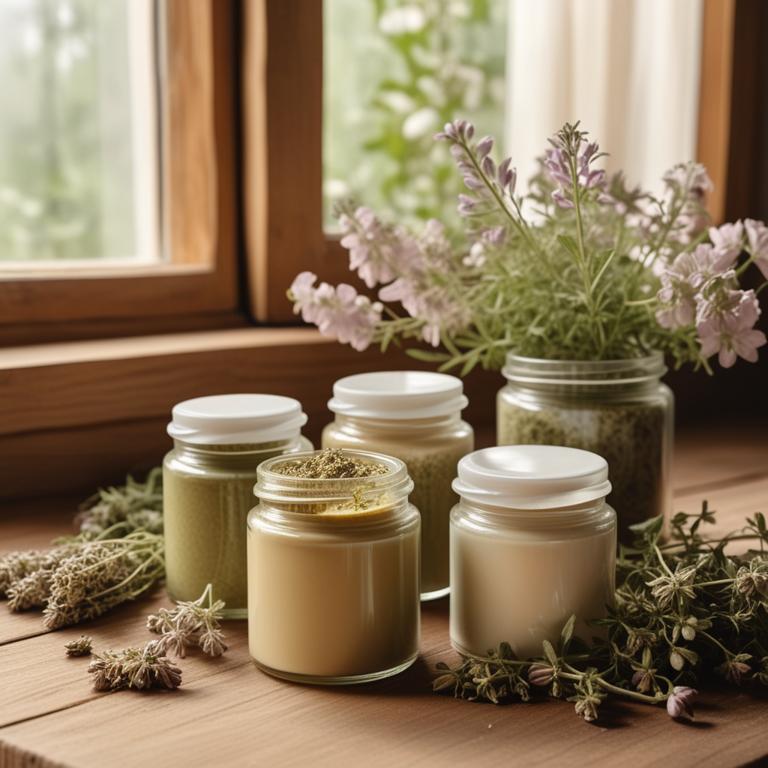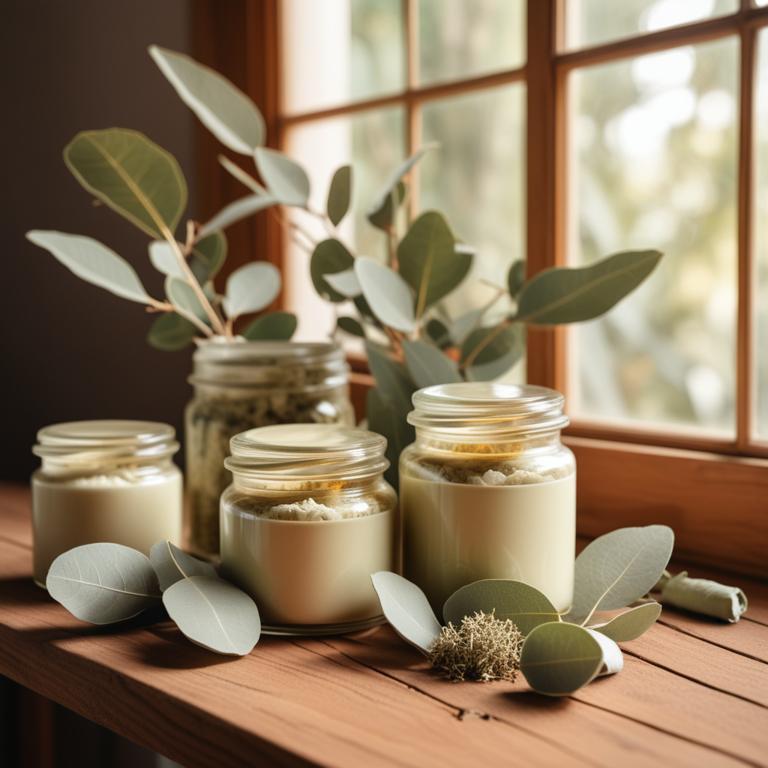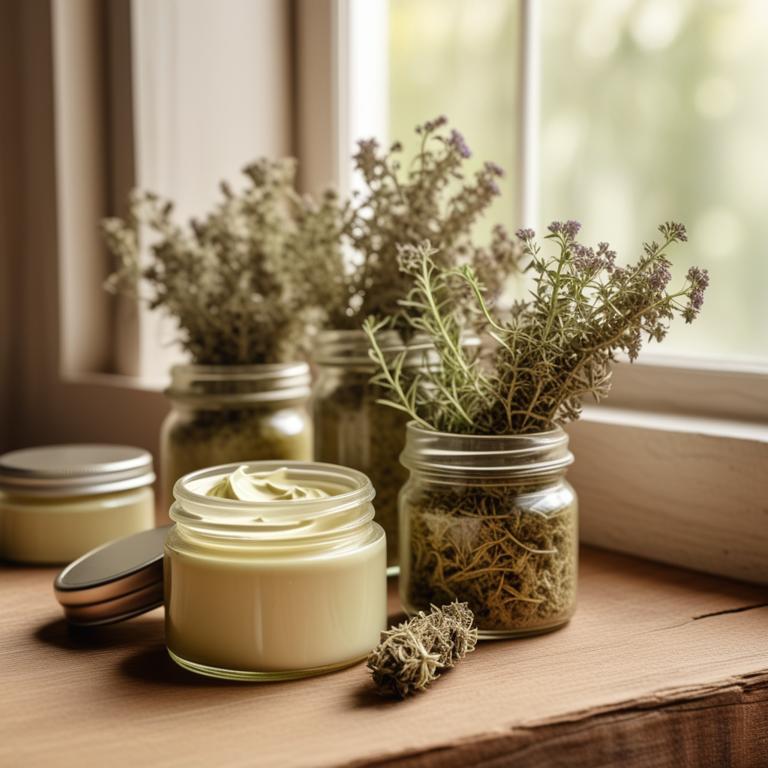9 Best Herbal Creams For Pimples

Herbal creams for Pimples are topical preparations made from natural ingredients, such as herbs, plants, and essential oils, that are used to treat and prevent acne and pimples.
These creams offer numerous benefits, including being gentle on the skin, free from harsh chemicals, and suitable for long-term use without causing any side effects.
Some examples of herbal creams used to treat pimples include aloe vera gel, which has anti-inflammatory properties and soothes the skin; tea tree oil, which has antibacterial properties and reduces acne-causing bacteria; chamomile cream, which has anti-inflammatory and anti-oxidant properties and calms the skin; lavender oil, which has antibacterial and anti-inflammatory properties and promotes relaxation; and neem cream, which has anti-inflammatory and antibacterial properties and fights acne-causing bacteria.
By using herbal creams for pimples, individuals can enjoy a natural, non-invasive, and effective way to manage acne and maintain healthy, glowing skin.
According to "RSC advances", creams for pimples may contain organic acids or phytochemicals such as terpenes, terpenoids, flavonoids, and phenolic compounds, which are commonly extracted from plants and have keratolytic, antibacterial, and anti-inflammatory properties that can help treat acne.
Below there's a list of the 9 best herbal creams for pimples.
- 1. Melaleuca alternifolia creams
- 2. Aloe vera creams
- 3. Calendula officinalis creams
- 4. Eucalyptus globulus creams
- 5. Lavandula angustifolia creams
- 6. Mentha x piperita creams
- 7. Thymus vulgaris creams
- 8. Achillea millefolium creams
- 9. Hypericum perforatum creams
Also you may be interested in...
TODAY'S FREE BOUNDLE
Herb Drying Checklist + Herbal Tea Shopping List + Medicinal Herbs Flashcards
Enter you best email address below to receive this bundle (3 product valued $19.95) for FREE + exclusive access to The Aphotecary Letter.
$19.95 -> $0.00
1. Melaleuca alternifolia creams

Melaleuca alternifolia creams, derived from the leaves of the tea tree, have been widely used to treat the pimple ailment due to their antimicrobial and anti-inflammatory properties.
These creams help to treat pimples by reducing redness and swelling, fighting off bacteria that cause acne, and promoting a balanced skin pH.
The bioactive constituents, including terpinen-4-ol and cineole, in Melaleuca alternifolia creams have been found to exhibit potent antimicrobial activity, making them an effective treatment for acne-prone skin.
Regular use of these creams can provide numerous benefits, including reduced acne severity, improved skin clarity, and a decrease in the risk of scarring.
Related Study
According to the American Journal of Clinical Dermatology, Melaleuca alternifolia creams, also known as tea tree oil, have the potential to become a standard treatment for pimples, as they are mentioned in the study as one of the botanicals that may have potential in acne therapy.
2. Aloe vera creams

Aloe vera creams have been widely used to treat pimples due to their anti-inflammatory, antibacterial, and antiseptic properties, which help to soothe and calm the affected skin.
The bioactive constituents present in aloe vera creams, such as aloin, aloe-emodin, and aloe-annic acid, have been shown to reduce inflammation and fight off bacterial infections that cause pimples.
By applying aloe vera creams to the affected area, individuals can help to reduce the redness and swelling associated with pimples, promoting faster healing and reducing the risk of scarring.
The benefits of using aloe vera creams to treat pimples include reduced inflammation, accelerated healing, and improved skin texture, making it a popular and effective herbal remedy for this common skin condition.
Related Study
According to "Journal of ethnopharmacology", Aloe vera creams for pimples may be beneficial as the gel materials of Aloe vera have shown the ability to heal wounds at a faster rate, which could potentially help in reducing the appearance and severity of pimples by promoting faster skin healing and minimizing inflammation.
3. Calendula officinalis creams

Calendula officinalis creams are a popular herbal preparation used to treat pimples and acne, thanks to their anti-inflammatory, antimicrobial, and antioxidant properties.
These creams help to treat pimples by reducing redness and swelling, preventing bacterial growth, and protecting the skin from oxidative stress.
The bioactive constituents of Calendula officinalis, including triterpenoids, flavonoids, and carotenoids, work together to soothe and calm the skin, promoting healing and reducing the severity of pimples.
Regular use of Calendula officinalis creams can help to prevent future breakouts, reduce the appearance of scarring, and promote overall skin health, making it a beneficial natural remedy for treating pimples and acne.
Related Study
According to "Journal of ethnopharmacology", Calendula officinalis creams for pimples may be beneficial due to their potential to stimulate fibroblast migration and proliferation, leading to wound healing and possibly reducing the appearance of pimples.
4. Eucalyptus globulus creams

Eucalyptus globulus creams are a natural and effective herbal preparation used to treat pimples, a common skin condition characterized by inflamed red bumps on the skin.
The antiseptic and anti-inflammatory properties of Eucalyptus globulus creams help to reduce inflammation and prevent infection, promoting a faster recovery from pimples.
The bioactive constituents of Eucalyptus globulus creams, including eucalyptol, limonene, and alpha-pinene, exhibit antimicrobial and anti-inflammatory activities that help to combat the bacteria and inflammation associated with pimples.
Regular use of Eucalyptus globulus creams can help to reduce the occurrence of pimples, prevent scarring, and promote a clear and healthy complexion, making it a valuable addition to any skincare routine.
5. Lavandula angustifolia creams

Lavandula angustifolia creams have been traditionally used to treat pimples due to their anti-inflammatory, antibacterial, and antiseptic properties.
These creams help to treat pimples by reducing inflammation, preventing the growth of bacteria that cause infections, and promoting wound healing.
The bioactive constituents of Lavandula angustifolia, such as linalool and linalyl acetate, have been shown to exhibit antimicrobial and anti-inflammatory activities, which contribute to their therapeutic effects.
The benefits of using Lavandula angustifolia creams to treat pimples include reduced redness, swelling, and the risk of scarring, as well as improved skin texture and appearance.
6. Mentha x piperita creams

Mentha x piperita creams, derived from the peppermint plant, have been traditionally used to treat pimples due to their anti-inflammatory and antimicrobial properties.
The herbal preparation helps to treat pimples by reducing redness and inflammation, killing bacteria that cause acne, and regulating oil production in the skin.
Bioactive constituents such as menthone, menthol, and limonene in Mentha x piperita creams contribute to their therapeutic effects, including their ability to soothe and calm the skin.
The benefits of using Mentha x piperita creams to treat pimples include reduced inflammation, improved skin clarity, and a natural and non-irritating approach to managing acne.
7. Thymus vulgaris creams

Thymus vulgaris creams, derived from the herb thyme, have been traditionally used to treat pimples and acne due to their antibacterial and anti-inflammatory properties.
The bioactive constituents present in thyme, such as thymol and carvacrol, help to combat the growth of Propionibacterium acnes (P. acnes), the bacteria responsible for causing pimples and acne.
By reducing inflammation and preventing bacterial growth, thymus vulgaris creams can help to alleviate the symptoms of pimples and promote the healing of affected skin.
The benefits of using thymus vulgaris creams to treat pimples include reducing the risk of scarring, preventing further breakouts, and promoting a healthy, balanced skin microbiome.
Related Study
According to "Dermatologic therapy", Thymus vulgaris creams for pimples may be effective due to the presence of Oregon grape root, which has synergistic antibacterial, anti-inflammatory, and bile-stimulating properties useful in acne.
8. Achillea millefolium creams

Achillea millefolium creams have been used to treat pimples due to their anti-inflammatory and antimicrobial properties, which help to reduce redness and prevent the spread of bacteria that cause acne.
The bioactive constituents present in these creams, such as sesquiterpene lactones and flavonoids, exhibit potent antioxidant and anti-inflammatory activities that aid in soothing the skin and reducing the severity of pimples.
The application of Achillea millefolium creams helps to treat pimples by reducing inflammation, preventing bacterial growth, and promoting healthy skin regeneration.
The benefits of using Achillea millefolium creams to treat pimples include reduced redness, faster healing, and a decrease in the occurrence of future breakouts.
Related Study
According to "Dermatologic therapy", Achillea millefolium creams for pimples have potential therapeutic benefits due to the plant's synergistic components, particularly its Oregon grape root which has antibacterial, anti-inflammatory, and bile-stimulating properties.
9. Hypericum perforatum creams

Hypericum perforatum creams, derived from the Saint-John's-wort plant, have been traditionally used to treat pimples and acne due to their anti-inflammatory, antimicrobial, and antiseptic properties.
The bioactive constituents of this herbal preparation, including flavonoids and phenolic acids, help to reduce inflammation and kill bacteria that cause acne, thereby promoting the healing of pimples.
The creams also contain hyperforin and hypericin, which have been shown to inhibit the production of pro-inflammatory cytokines, further contributing to their therapeutic effects.
The benefits of using Hypericum perforatum creams to treat pimples include reduced redness, inflammation, and scarring, as well as a decrease in the appearance of acne lesions, making it a popular natural remedy for acne treatment.
Related Study
According to "American journal of clinical dermatology", Hypericum perforatum creams for pimples may have potential benefits in treating acne.